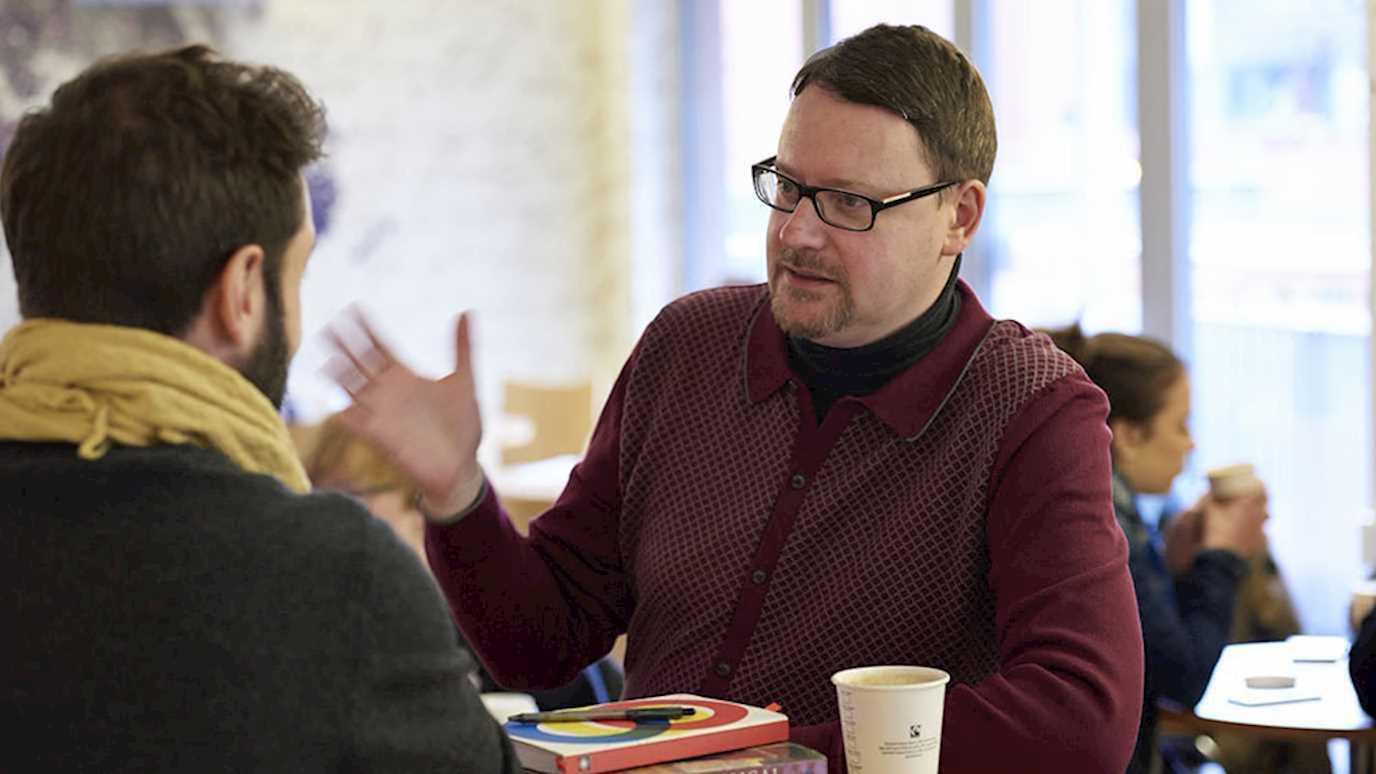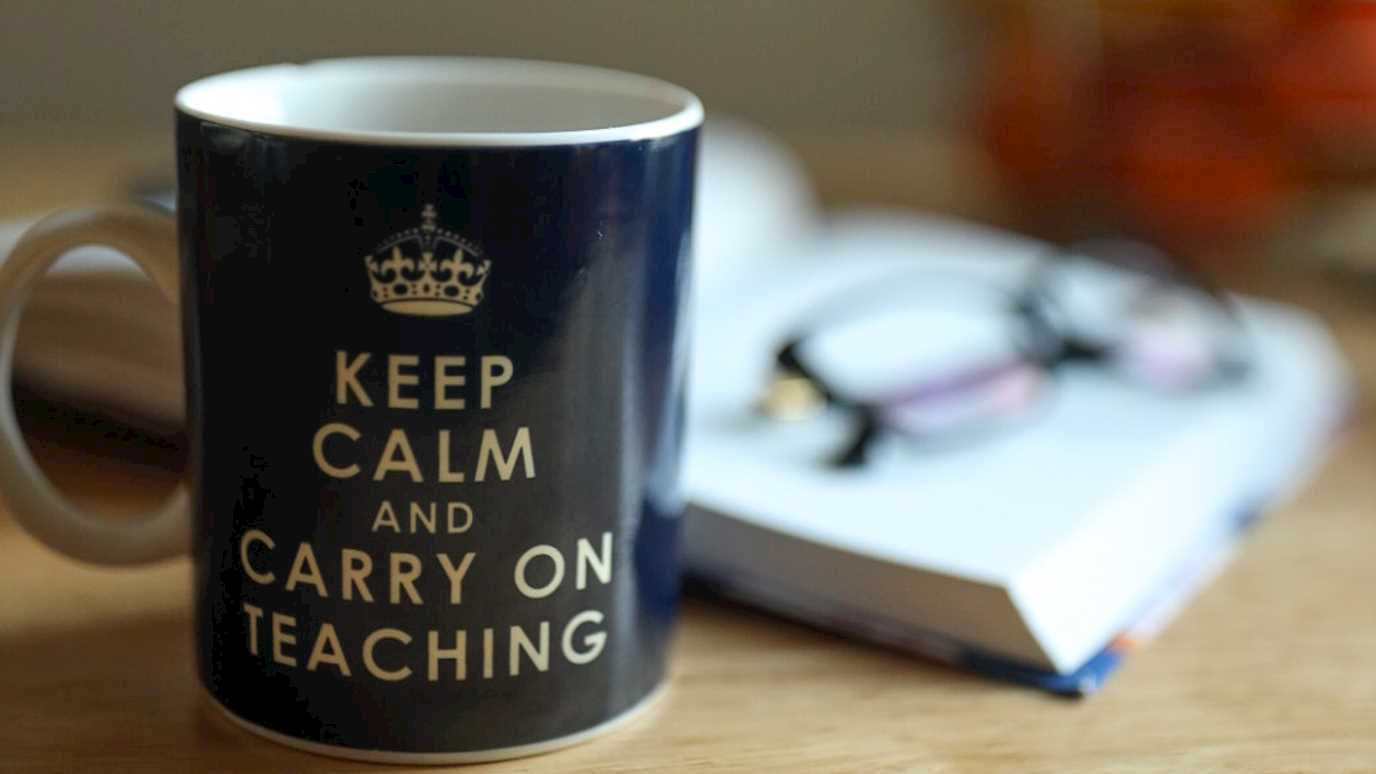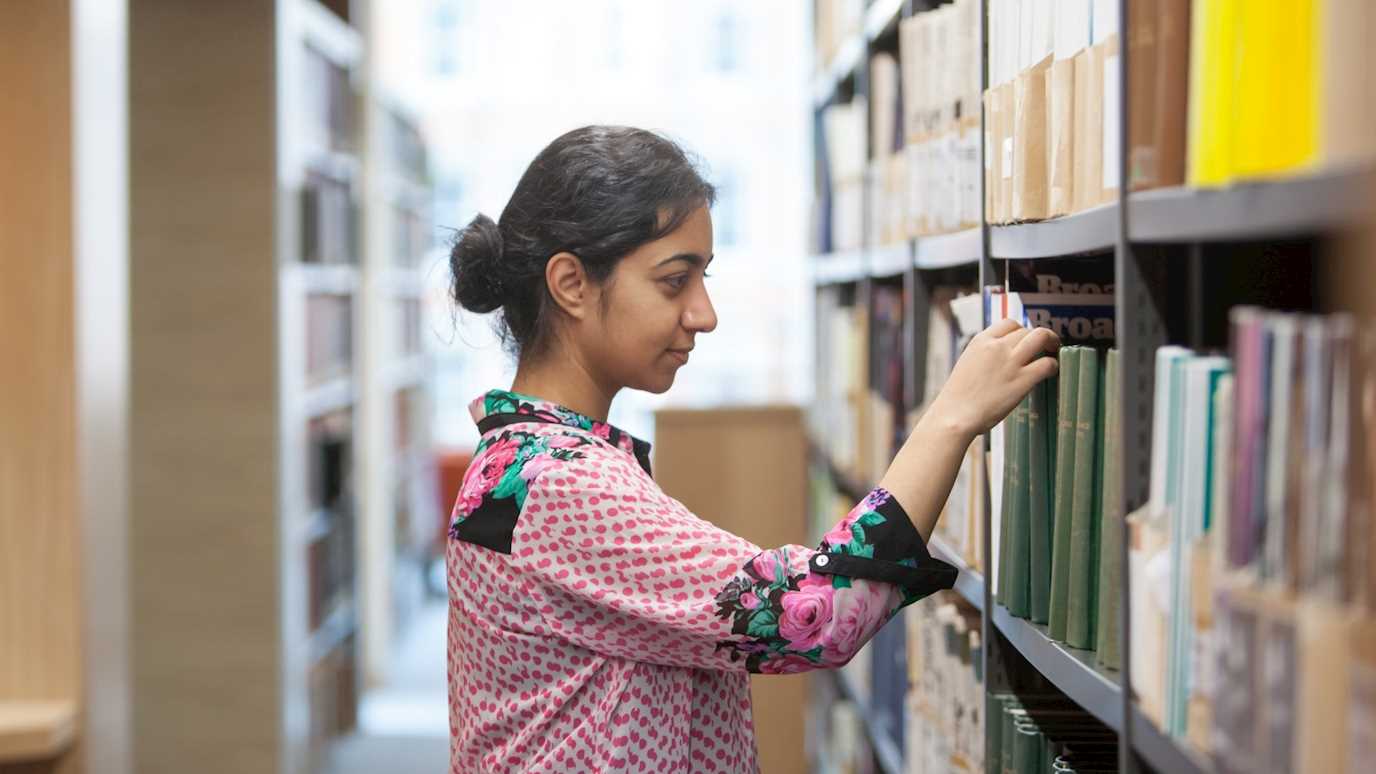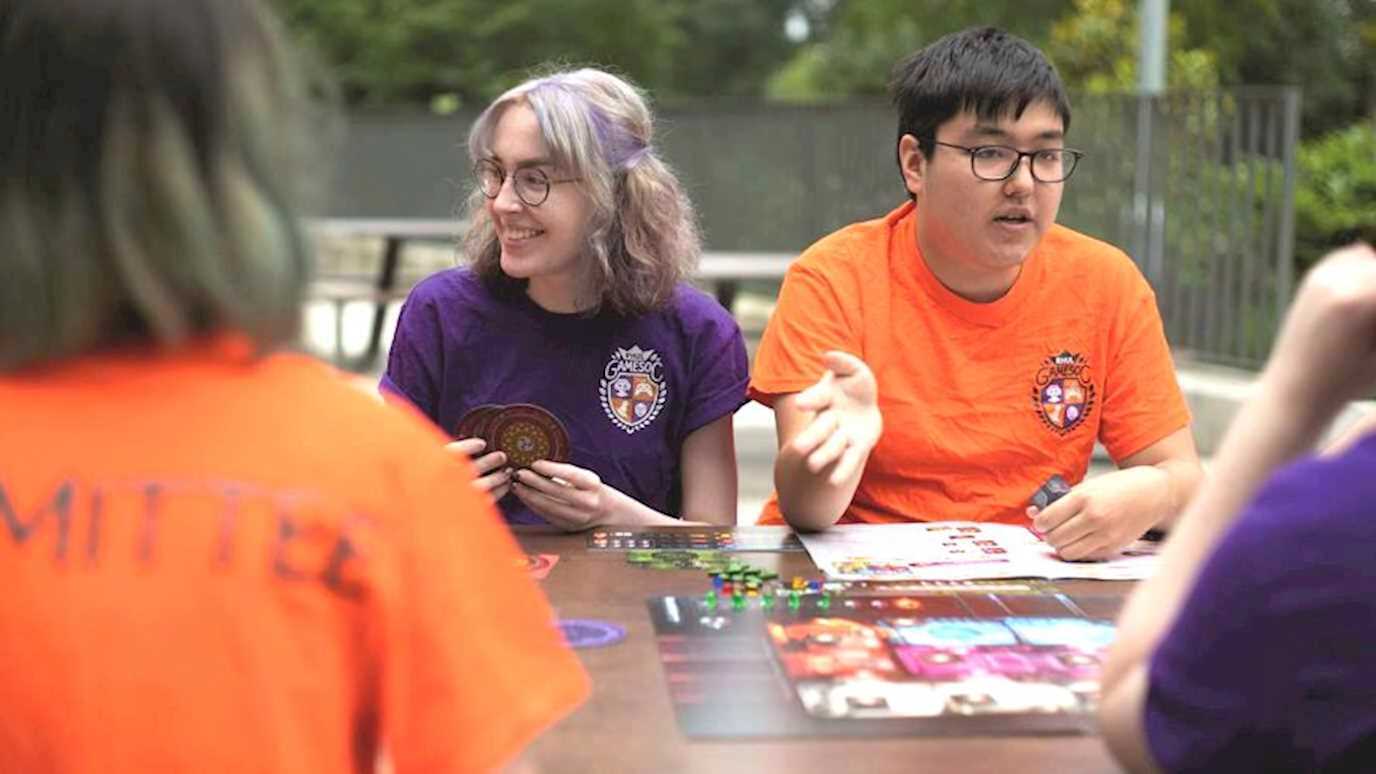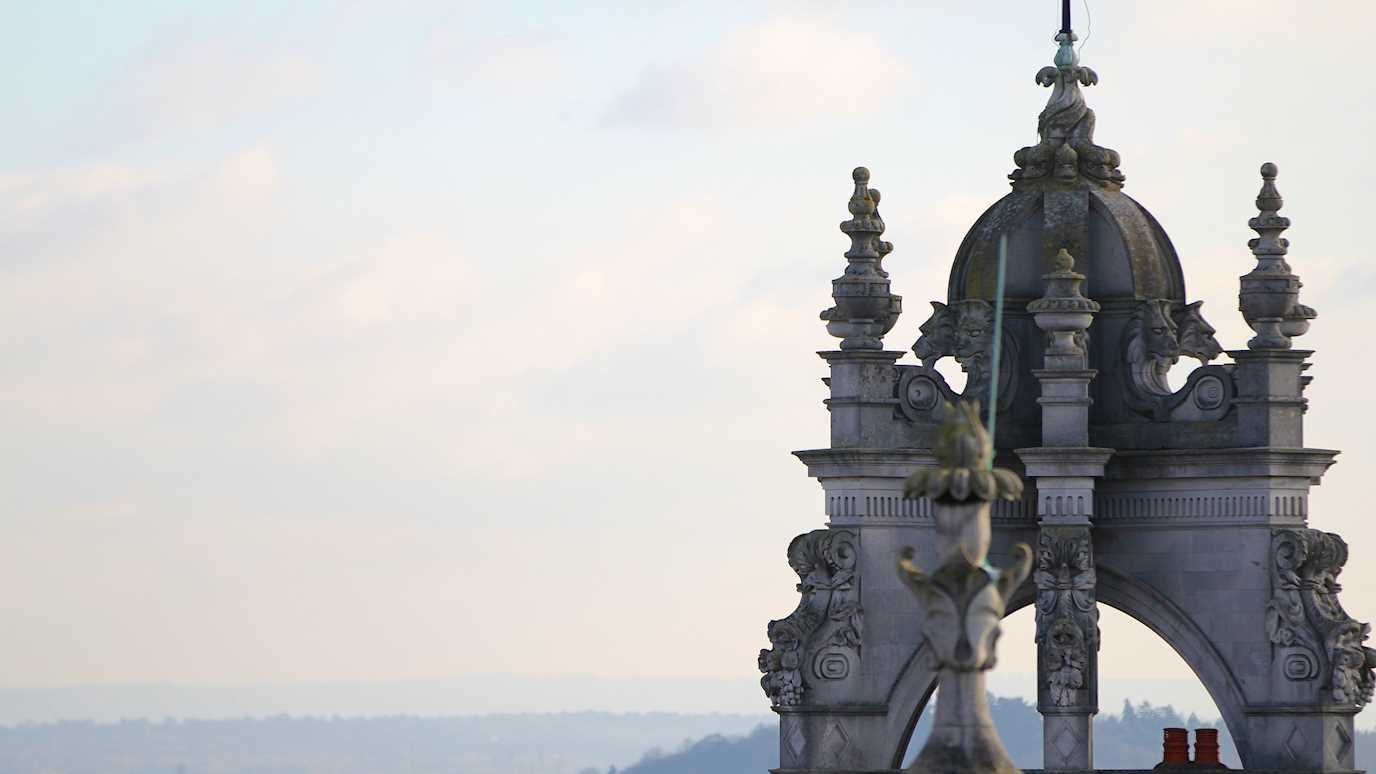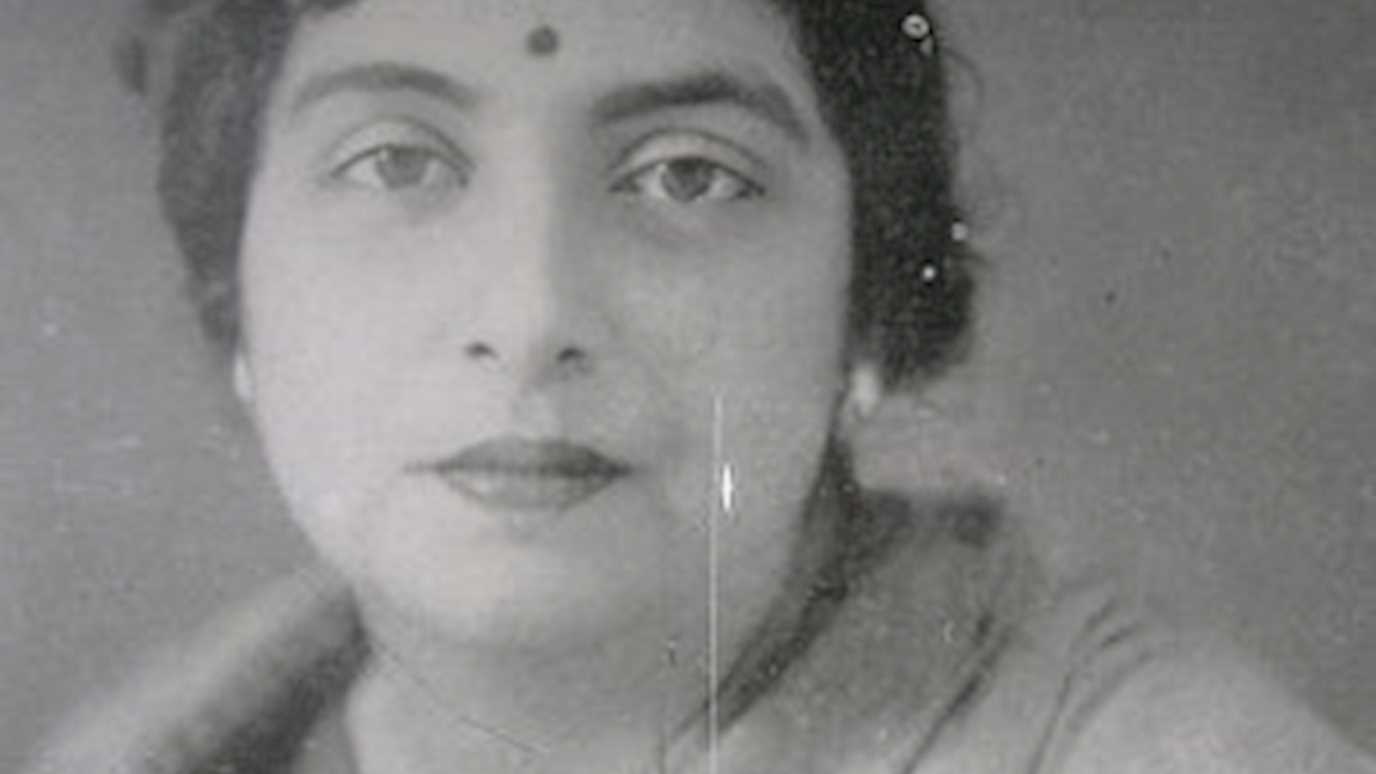Bodies and Material Culture Research Group brings together brings together scholars of health and intimacy, politics and identity, consumption and urban planning and visual and material culture with the intention of promoting intellectual exchange and collaboration in this new field.
The Group promotes a number of activities, including high-profile research projects, a seminar series, and workshops.
Founded in 2010 by Sandra Cavallo and Jane Hamlett, over the past decade the Group has secured large grants for three major research projects as well as conferences and an international network. Hannah Platts joined as a Co-Director in 2017 and the centre is currently directed by Jane and Hannah. Since then the group has increasingly served as a base for collaborative work with museum and heritage centres to share knowledge, develop historical research for curatorial use and explore how museum visitors experience history in sensory and digital worlds.
Biographies of Directors:
Jane Hamlett

 Jane Hamlett is Professor of Modern British History at Royal Holloway University of London. Her research interests include histories of society and culture in modern Britain, women and gender, the family, intimacy and emotion, and material and visual culture. Her first book Material Relations: Middle-Class Families and Domestic Interiors In England, 1850-1910 (MUP, 2010) explored the relationship between middle-class families and their material worlds, and her second monograph At Home in the Institution: Material Life in Asylums, Lodging Houses and Schools in Victorian and Edwardian England (Palgrave, 2015) explored material culture and domesticity in institutional space. With Julie-Marie Strange, she is currently writing a book on the history of pets in modern Britain, based on their collective work for the AHRC Pets and Family Life Project.
Jane Hamlett is Professor of Modern British History at Royal Holloway University of London. Her research interests include histories of society and culture in modern Britain, women and gender, the family, intimacy and emotion, and material and visual culture. Her first book Material Relations: Middle-Class Families and Domestic Interiors In England, 1850-1910 (MUP, 2010) explored the relationship between middle-class families and their material worlds, and her second monograph At Home in the Institution: Material Life in Asylums, Lodging Houses and Schools in Victorian and Edwardian England (Palgrave, 2015) explored material culture and domesticity in institutional space. With Julie-Marie Strange, she is currently writing a book on the history of pets in modern Britain, based on their collective work for the AHRC Pets and Family Life Project.
Hannah Platts

Hannah Platts is a Senior Lecturer in ancient history and archaeology. Her research interests revolve around the material culture and social history of ancient Rome, in particular the factors which impact upon status display and social hierarchies in the Roman domestic sphere. Her first book Multisensory Living in Ancient Rome: Power and Space in Roman Houses (Bloomsbury 2019), examined the physical experience of daily life and ritual in the Roman house. By looking at diverse sensory experiences, such as sound, smell, touch, taste and sight, it investigated how Roman house owners manipulated bodily experiences in their dwellings in order to display social standing. As well as investigating the lived experience of Roman houses, her forthcoming book Villas and Values: The Cultural and Competitive Lives of Rome’s Elites (Routledge) explores the luxury villas of mainland Italy and their role in constructing social perceptions of elite self-identity and what it actually was to be ‘elite’ in the Roman world.
Hannah’s fascination with multisensory research has also led her to examine how digital and immersive technologies can be used to recreate fragile and fragmentary historic sites and artefacts in order to bring to life past eras for today’s audiences and museum visitors outside the academy. She recently collaborated on an AHRC project entitled Sensations of Roman Life, where she helped build an immersive virtual reality model of a town house and neighbourhood from Roman Silchester using excavation reports to recreate not just the buildings but also the sounds and smells that reflected the archaeological finds of daily life in and around the dwelling. Building on from this project, Hannah has collaborated with numerous museums and heritage sites in the UK, including Historic Royal Palaces, Jorvik Viking Centre and Surrey History Centre in the UK and the Franklin Institute and Colonial Williamsburg in the US to explore the use of immersive and digital technologies in cultural institutions to develop visitor experience and widen participation, accessibility and diversity amongst audiences.
Associated Projects
AHRC Pet Histories and Wellbeing Project
Pet Histories and Wellbeing is an AHRC-funded project to develop research on the history of pets and wellbeing in the context of contemporary debates with the Museum of the Home (link) and the Charity Blue Cross (link). The research comes from Jane Hamlett and Julie-Marie Strange’s AHRC funded Pets and Family Life Project (link blog), that ran 2016-2019 and explored the role of pets in family life from the Victorian period to the mid twentieth century. The project brings the three partners together to produce an immersive environment installation at the Museum, a film and a series of public engagement activities that will run in summer 2021.
Pets are an important part of Britain's society, culture and economy. In 2019 a UK Gov and PDSA report estimated that 50% of UK adults owned a pet. Pets are part of family life, but they are also an important part of the British economy. In 2019, the store Pets at Home reported half-year pre-tax profits of £45 million. Meanwhile, mental health awareness is unprecedented both in terms of people accessing services and public dialogue. It is estimated that approximately one in four people in the UK will suffer a mental health problem each year and that mental health problems are the largest single cause of disability in the UK. Recent research has demonstrated a strong link between pet animals and human wellbeing. A 2019 Blue Cross Report [link – BC report link in the chain] found that pets can help people with mental health conditions by offering love and company, increased social interaction, motivation, exercise and distraction. During the COVID period many people spent more time with their pets and relied on their companionship during lockdown, increasing their role in human wellbeing.
The capacity of pets to forge strong emotional attachments with their guardians is a major theme of the Pets and Family Life Project - while species popularity, pet keeping practices and cultural framing changed over time, there was significant long-term continuity in emotional investment in animals. The historical research strongly supports the contention that pets can make a significant contribution to individual wellbeing. Historical interpretation and archival materials will be developed to provide the creative basis for a series of activities and outputs including: a film exploring the relationship between pets people with mental health conditions in the past and present; an immersive environment recreating the presence of animals in the home; a debate forum exploring the wellbeing of both owners and pets in contemporary and historic perspectives; and a programme of public engagement . The historians will also work with the museum on raising the profile of animals in the permanent collections.
Read their blog here!
AHRC Sensations of Roman Life Project
Impact Case Study: Transforming Curatorial Practices in Museums to Diversify Audiences
Read the case study here!
Previous events
Inked Up Marked Out: Interdisciplinary Encounters with Tattooing - 12th May 2023, Royal Museums Greenwich
Inked Up Marked Out was envisioned as one of the first UK academic conferences to be entirely devoted to themes around tattooing. It was co-organised by RHUL’s Sarah Weston and partly funded by the BMCRG and HARI. The conference was interdisciplinary and designed to be accessible to a wide range of researchers from different disciplines and at different stages in their careers. Both these objectives were achieved with speakers from faculties of History, Television and Film Studies, Sociology, Therapy, Literature Studies, Design, Law and Mathematics attending. The event also drew together tattoo artists from a wide range of culture backgrounds, from white working class to Afro-Caribbean and Māori communities. The generosity of funders and speakers enabled the organisers to keep the event free and this allowed a range of speakers and attendees to access the event, from established experts in the field to PhD students and early career researchers. Papers during the day tackled some difficult issues including HIV, infertility and loss and dark fandom.
Ancient History Seminar at the Institute of Classical Studies is co-organised by CSBMC co-director Dr Hannah Platts and explores the ‘The Embodied Histories and Archaeologies of the Graeco-Roman World’.
The seminars will be held via Zoom on Thursdays at 4:30pm (GMT), except 4th March when the seminar will begin at 4:00 (GMT).
These seminars are free and open to all, but registering online in advance is essential at https://ics.sas.ac.uk/events
The Embodied Histories and Archaeologies of the Graeco-Roman World
25th February Eleanor Betts (Open University): Multisensory movement in ancient Rome
4th March Victoria Leonard (Coventry/ICS) : Positive Outcomes? Gendered Violence,
(at 4:00 pm) Victim Credibility, and Adjudicating Justice in the Early Fifth Century
11th March Ellen Adams (KCL): Touch and the Tiresias Project in the Parthenon Galleries of the British Museum
18th March Hannah Platts (RHUL): Sensory spaces in the Roman house
25th March Ulrike Roth (Edinburgh): Trimalchio’s body and the history of Roman slavers
Seminar series organised by Hannah Platts (Hannah.platts@rhul.ac.uk) and Richard Alston (R.Alston@rhul.ac.uk)
Round Table – ‘Home and Work’
Weds 9th October 2019, 11 Bedford Square.
Speakers: Laura Humphreys, Science Museum; Prof Jane Whittle, Exeter; Dr Annabelle Wilkins, Manchester; Prof Gillian Symons, RHUL.
The growth of a digital economy and an increased culture of working from home has, arguably, blurred the boundaries of home and work in twenty-first century society. But how is the divide between home and work constituted – and how have ideas and understandings of this varied between different periods, places, and culture? And how has this played out through domestic practices in embodied material words? How can taking a historical perspective change the way we understand these issues? Featuring experts from different disciplines, the round table explored the interaction of home and work from historical and contemporary perspectives.
International Conference – Domesticating the Air: A Political History of Breathing
11th September 2018 Bedford Square
Organised by Sandra Cavallo in collaboration with the Max Planck Institute for the History or Science
Round Table – Technologies on the Body
11 December at 5.30pm, Senate House, Room 104
Speakers: Dr Jane Draycott (Glasgow); Dr Paolo Savoia (Kings); Dr Jennifer Wallis (Imperial).
Commentator: Dr Angela McShane (Wellcome)
The roundtable brought together scholars from different periods and places to reflect on the relationship between technologies and the body, focusing on specific technologies that are used with or become part of the body. Our speakers explored the use of prosthetic limbs, cosmetic surgery and breathing apparatus - exploring the integration of objects, bodies and bodily processes.

Public Engagement Workshop – Recreating Domestic Technologies and Experiences
March 20 2019 RHUL
This afternoon workshop explored how household technologies and the experiences of using them are recreated in museum and education settings. The workshop opened with a talk from Dr Helen Peavitt, Science Museum Curator, on the display methods for household objects in the Science Museum and was followed by a practice-based session from Dr Katie Carpenter based around Victorian and Edwardian marmalade cutters.
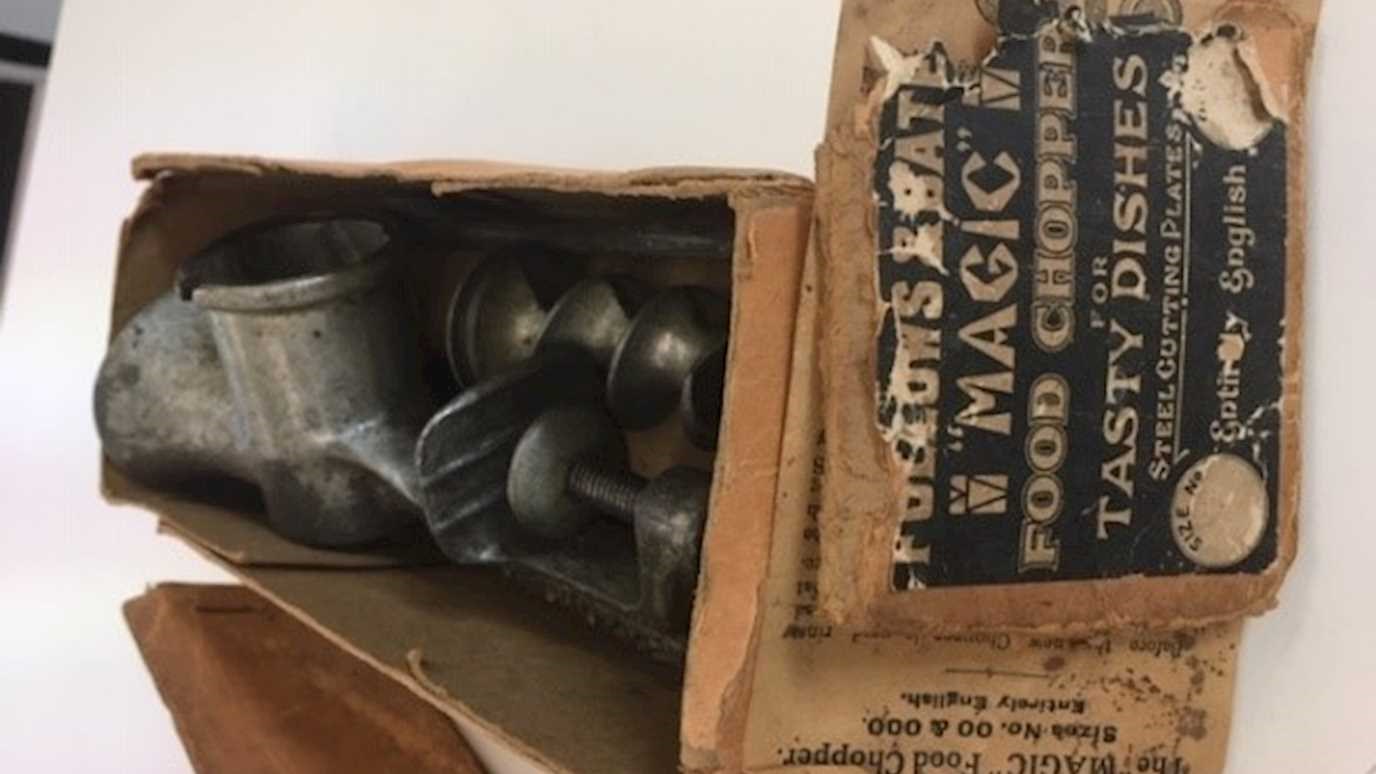
Animals and Home Conference
Institute of Historical Research on Wednesday May 1st 2019
The ‘Animals and the Home’ conference explored the relationship between animals, humans and the home in diverse forms. The study of the home is an important area in geography, history and anthropology but, as some animal studies scholars have remarked, animals figure in it infrequently. Animal presence is rarely mentioned in studies of idealised homes, domestic practices or family relationships. In recent decades studies of human-animal relationships have also developed and diversified, and a large body of scholarship now explores animal-human histories. While the cultural, economic and social significance of pet animals has been an important theme in this literature, discussions of these animals are sometimes abstract and removed from the everyday spaces and places they inhabited. Less attention has also been paid to the role of utility animals and household pests. This conference aims to bring home and animals together – thinking about the relationship between animals and ideas and emotional understandings of home, but also home as a lived experience.
Read more about the conference here!
Round Table: ‘Material Culture and the Senses’.
Wednesday October 18th 5.30pm, Senate House Room 102.
Speakers: Hannah Newton, Reading; Hannah Platts, RHUL; Hannah Thompson, RHUL; William Tullett, KCL.
This round table explored recent approaches to sensory experience and past material cultures. Bringing together four experts on ancient and modern periods, we will explore the methodological challenges involved in understanding how people saw, heard, tasted, smelt and felt about material worlds.
Translating Medicine in the Pre-Modern World: Materials, Images and Text
7-8 July 2017, Wellcome Trust Building and Library, London
The CSBMC sponsored Translating Medicine in the Pre-Modern World: Materials, Images, and Texts. It was one of the first two events organized by the network Translating Medicine in the Pre-Modern World. It was co-sponsored with the University of York, the Society for the Social History of Medicine (SSHM) and the Wellcome Library.
Download the programme.
Joint Book Launch: Conserving Health and Malleable Anatomies
7 July 2017 6pm to 8pm, Senate House, SH261
The CSBMC hosted the joint book launch of Sandra Cavallo and Tessa Storey, Conserving Health in Early Modern Culture: Bodies and Environments in Italy and England and Lucia Dacome, Malleable Anatomies: Models, Makers, and Material Culture in Eighteenth-Century Italy with comments by Alex Bamji (Leeds) and Anna Maerker (KCL), followed by a drinks reception.
You can download the list of contents and blurbs for Conserving Health in Early Modern Culture and Malleable Anatomies here.
Kitchens in Britain and Europe, 1500-1950
Although seen as the 'heart' of the home in some places and periods, the kitchen is still a relatively underexplored space. This workshop brought together international scholars working on the kitchen, who presented papers on a range of geographical and chronological perspectives. Topics of papers included: kitchen and food propaganda in World War Two; artisan working-class homes in Britain; and the modern use of the historic kitchens at Hampton Court Palace.
The day stimulated much discussion and debate about the potential of the kitchen in advancing social and cultural histories. The day benefitted from an afterword by historian of kitchens Sara Pennell, who outlined the directions scholarship in this area might take. The event was followed by the launch of Pennell’s book, The Birth of the English Kitchen, 1600-1850.
This event was live tweeted. You can see all the tweets here.
Download the programme.
Previous Seminar Series
2016-2017 The Family in Visual Culture
18th October, Senate House, Room 261.
Round Table: The Family in Visual Culture.
Participants:
Christine Grandy (University of Lincoln)
Annebella Pollen (University of Brighton)
Kate Retford (Birkbeck College, University of London)
This event was co-convened with the Bedford Centre for the History of Women.
9 November, 11 Bedford Square, Room 03.
Seminar
Elsje van Kessel (University of St Andrews), 'Painting the Family: Irene di Spilimbergo, Titian, and the Portrait as Surrogate’.
30 November, 11 Bedford Square, Room 03.
Janet Fink (University of Huddersfield), ‘Reflections from the Silver Screen: Family Lives and Family Problems in Postwar British Cinema’
2015-2016 Emotions and Material Culture
14th October, Senate House, Room 261
Round Table: Emotions and Material Culture
Participants:
Mary Laven (Cambridge)
Joanne Bailey (Oxford Brookes)
Julie-Marie Strange (Manchester)
Chair:
Sandra Cavallo (RHUL)
18th November, 11 Bedford Square, BSQ1-01
Joint Seminar
Sarah Johanesen (KCL), ‘Fostering Relationships: The Emotional Content of Gifts and Gift-Giving in the Exchanges of Bess of Hardwick and her Female Contemporaries’
Michaela Jones (RHUL), ‘A Home of One's Own: Gender and Domesticity on Display in the Dolls' House, 1600 - 1850’
9th December, 11 Bedford Square, BSQ1-01
Joint Seminar
Sally Holloway (Richmond), ‘”My heart is in my eyes”: Sensory interaction with courtship gifts in Georgian England’
Stella Moss (RHUL), '"Talking of Struggles and Laughing Them Away": The Emotional Landscape of the English Public House in the 1930s’
2014-15 Material Culture and Agency
22nd October
Round Table: Material Culture and Agency
Participants:
Professor Margot Finn (UCL)
Dr. Sara Pennell (Roehampton)
Professor John Styles (Hertfordshire)
Dr. Simona Valeriani (V&A)
5th November
Joint Postgraduate Seminar Session: Agency in Institutional Spaces
Susan Woodall (RHUL), 'Porous boundaries and "troublesome inmates": defining and defying the moral space of reform institutions for “fallen” women'
Jamie Nightingale (RHUL), 'All at sea? Ritual space and the School Board for London’s ‘slap-dash happy-go-lucky’ training ship'
Travel: Bodies and Objects in Motion
2013
23 October
Giorgio Riello and Anne Gerritsen (Warwick),‘Spaces of Global Interactions: The Material Landscapes of Global History’ Listen online here.
13 November
Ruth Livesey (RHUL), 'Dickens and America: Transport and the Making of Place in the 1840s'
11 December
Aaron Moore (Manchester), 'Physical Dimensions of Self: Diaries and Self-Discipline in East Asian Armies, 1937-1945'
2014
29 January
Carl Thompson (Nottingham Trent), 'Gender and the Romanticization of Travel Writing; Maria Graham's Journal of a Residence in Chile'
26 February
Charlotte Brown (RHUL) 'The Objects of Men’s Affections in their Letters Home 1760-1830'; Weipin Tsai (RHUL), ‘‘'Bright is the Moon Over my Home Village: the Family Letters of Chinese Merchants in Late Qing China'.
12 March
Ann Massey (Middlesex), ‘Bodies at Sea: Colonial Discourses and Ocean Liner Design’.
2012-2013 Imbibing Bodies: Histories of Drinking and Culture
2012
17 October
Karen Harvey (Sheffield), 'Politics by Design: Drink, Allegiance and Manly Consumption'
21 November
Lyanne Holcombe (Kingston), 'Leisured Spaces, Liminal Bodies: Gender and the Practice of Consumption in the Lyons Restaurant, Grill and Hotel 1914-1939'
12 December
Mark Hailwood (Exeter), ''Alehouses, Sociability and Intoxication in Seventeenth-Century England'
2013
16 January
James Kneale (UCL), 'Measuring Moderate Drinking Before the Unit: Medicine and Life Assurance in Britain and the United States, c.1860-1930'
13 February
Tessa Storey (RHUL), 'Salute! Drinking to Health in Late Renaissance Italy'
13 March
Stella Moss (RHUL), '"An Abnormal Habit": Methylated Spirit Drinking in Interwar Britain
Researchers
Honorary Research Associates
Dr Rebecca Preston
Honorary Research Associate 2012-15
Rebecca's research interests and publications are on landscape and identity, and the space, use and representation of the home in nineteenth and twentieth-century Britain. In 2010–2012 she was a Research Fellow at Royal Holloway, working on the ESRC-funded project ‘At Home in the Institution’, led by Jane Hamlett. Her research interests and publications are on landscape and identity, and the space, use and representation of the home in nineteenth- and twentieth-century Britain.
Rebecca’s doctorate in the Geography Department at Royal Holloway, supervised by David Gilbert and Denis Cosgrove (1999), was a study of the nineteenth- and early-twentieth-century suburban garden and its role in the making of social identities. She is currently developing this research for publication and is also working on representations of home in popular photography, leisure magazines and suburban memoirs in late-nineteenth- and early-twentieth-century Britain. Previously she held post-doctoral research posts at the AHRC Centre for the Study of the Domestic Interior (Royal Holloway, the Victoria and Albert Museum and the Royal College of Art), the Geffrye Museum and the Centre for Suburban Studies (Kingston University). She has worked in housing research and as a researcher in historic building and landscape conservation, including the Strawberry Hill Trust, the World Monuments Fund in Britain and the National Trust.
Dr Katherine Rawling
Honorary Research Associate 2013-16
Katherine was awarded her Ph.D. in History from Royal Holloway for her thesis “Visualising Mental Illness: Gender, Medicine and Visual Media, c. 1850-1910” (2011), supervised by Professor Amanda Vickery. She was awarded full AHRC doctoral funding to carry out her postgraduate studies and she completed her thesis for submission in three years (2007-2010). She gained her MA (distinction) from Royal Holloway in Women’s and Gender History (2004). During this time she was awarded the Olwen Hufton Essay Prize for her masters work. She received her first class degree MA (Hons) in History from the University of Edinburgh (2003).
She is developing a postdoctoral project to extend her research beyond the photographic practices of British asylums in the late nineteenth century to those within the Victorian institution more generally, such as prisons and police files. She has identified several archive collections of images of criminals, ‘problem groups’ such as drunks and vagrants, as well as patients, which will form the basis of her new research which aims to map more closely the relationship between the camera and the institution. This postdoctoral research will be national in scope and include archives held at Bath (photographs of prisoners at Bath Central Police Station c.1900-1920), Manchester (Prestwich Asylum admission photographs 1891-), Cheshire (photographs of local offenders c.1869-1879 and patient photographs at Chester Deva Asylum and Macclesfield Parkside Asylum), East Sussex (patients at Hellingley Hospital, 1903-1910), Bedford (Bedford Prison Inmates 1859-1877 and St Francis’ Home a Catholic orphanage for boys c.1870-1884), Lincolnshire (Habitual Criminals Register 1875-1878).
Katherine then intends to combine her doctoral and postdoctoral research to form a larger monograph examining the use of the camera and photography in the Victorian institution. This would be the first study of its kind to address photographic practices across a range of institutions.
Dr Tessa Storey
Honorary Research Associate 2013-16
Currently Honorary Research Associate in the Department of History, Tessa was awarded a PhD in History and Civilization from the European University Institute in Florence, in 1999. Her thesis was titled “Questo Negozio è Aromatićhissimo” A Sociocultural study of Prostitution in Early Modern Rome, supervised by Dame Professor Olwen Hufton and Prof. Laurence Fontaine. She had earlier received a first class degree in Italian Studies with History at Exeter University in 1993, followed by an MA in History from Exeter in 1994. Following her PhD she was awarded a three year Leverhulme Special Research Fellowship which she held at Royal Holloway, and subsequently taught part-time on the Early Modern European History MA.
Tessa’s book Carnal Commerce in Counter Reformation Rome, which appeared in 2008 with OUP is based broadly on her PhD research, as are six articles which explore various themes related to prostitution in early modern Rome, such as the identities of prostitutes, the material culture of prostitution, the circulation of second hand goods and concepts of masculinity.
In 2006 she began working as research associate for David Gentilcore at Leicester University on a Wellcome Trust funded project ‘Italian Receipts Database,’ which prompted a shift in her research interests to the history of medicine in early modern Italy, leading to an article on the making of potions and ‘secrets’ in early seventeenth-century Rome . This was followed by her appointment in 2009 as Research Associate for Prof. Sandra Cavallo in the Department of History at RHUL on a Wellcome Funded Project “Healthy Homes and Healthy Bodies in Late Renaissance Italy.” As a result of this research she and Sandra Cavallo have co-authored a book entitled Healthy Living in Late Renaissance Italy, due to appear with Oxford University Press in the autumn of 2013, as well as an article on ideas of health and exercise amongst the Italian aristocracy.
At present Tessa is jointly engaged in research into the practices and knowledge surrounding the production, use and detection of illicit substances –particularly poisons-in early seventeenth-century Rome, with Dr. Silvia De Renzi of the Open University, and intends to extend her research into the medical advice on drinking and the material culture of drinking in Renaissance and Early Modern Italy.
Visiting Fellows
Dr Natalia González Heras
Visiting Fellow February - May 2012
Natalia was a PhD student in the Department of Early Modern History, Universidad Complutense de Madrid. Her thesis is on the domestic interior of eighteenth-century middle class houses in Madrid. During 2012, she was a visiting researcher at the Centre on a “Short research period abroad” grant of the FPI (Formación de Personal Investigador) granted by the Spanish Government.
Dr Carolina Blutrach Jelin
Visiting Fellow June-August 2013
Carolina is Juan de la Cierva Postdoctoral Research Fellow at the Universitat de València in Spain. In 2012, Carolina visited the Centre on a month-long fellowship funded by the Universitat de València, researching gender, material culture and memory among the Spanish aristocracy in the 17th century.
Upcoming events and conferences
Upcoming events and conferences will be listed below once scheduled.
Associated PhD students
Ellis Cuffe
Ellis Cuffe is a Classics PhD candidate at Royal Holloway supervised by Prof. Richard Alston. His current research explores the micro-histories and coping strategies of rural, Romano-Egyptian households (ca. 30 BC – AD 400), applying ‘livelihood’ and ‘life-course’ approaches. The rich documentary record and abundant archaeological evidence from the villages of Roman Egypt provides a unique insight into rural life from the perspective of individual experiences, social interactions, and gender and power relations, which generated structural concepts of 'family' and 'community'.
Alison Bazley
Alison has a particular interest in art and objects and her current research project combines her love of objects and the Middle Ages. After completing a BA in History of Art and Architecture at the University of Reading (first class), Alison took an MA in Medieval Studies at Royal Holloway. For her MA thesis, Alison worked with the Museum of London on a project which examined and catalogued the small number of medieval mirror-cases held in the museum’s collections. Alison’s PhD project extends and develops the theme of medieval mirrors. This is an interdisciplinary project which uses visual and material culture in the form of medieval mirrors themselves, together with contemporary literature and manuscript illuminations, as well as historical documents such as letters, wills and inventories. By means of an object-biographical methodology, the makers and owners of medieval mirrors will be explored in order to better understand the ways in which these objects were perceived and used in medieval society.
Katherine Griffiths
Katherine Griffiths is a former and some-time DJ. She played rare groove at gigs and parties in London, Manchester, and Paris in the 1980s and 1990s on the lesbian and straight club scenes. She is currently reading her PhD in history at Royal Holloway University of London – tentatively titled ‘Going Out, Coming Out, Playing Out’. Using queer oral history, cultural geography, her own collection of club flyers and mix tapes from the time and an engagement with archives and material culture. This is an exploration and recouping of the lesbian club scene in London in the 1980s and 1990s that Black and white women created on the margins of this vibrant city.
Hannah Gabriella Miles
Hanna is a third year PhD candidate in the Department of English, and a part-time Visiting Tutor, at Royal Holloway, University of London. She holds a Master of Arts degree in Modern and Contemporary Literature, Culture and Thought, and a Bachelor of Arts degree in English Literature, both from the University of Sussex.
Her PhD thesis, supervised by Professor Robert Eaglestone, explores refutations of loss within the writings of Vladimir Nabokov, with a focus on depictions of trauma and nostalgia. The project combines aspects of psychoanalysis, trauma theory, memory studies and cultural history, with a large part of her research focusing on the ways in which emotional affect and subtext are conveyed by Nabokov through the description of material objects. She is particularly interested in the role consumer culture and advertising play in Nabokov’s ‘Berlin’ novels (1926-1938) and his ‘American’ novels (Lolita, Pnin, Pale Fire). Informed by her work on Nabokov, she is currently working on a separate interdisciplinary project, which explores how the souvenir object relates to emotions and experience, with a specific focus on typically negative affect and experiences, such as grief, loss and trauma.
Florence Pinard- Nelson
Florence’s research interests are on school landscapes, the role of gardens and gardening in educational institutions across class and gender in the nineteenth- and early twentieth-centuries.
She is working on a PhD on gardens in educational institutions in England between 1870 and 1939. She has worked with maps and archive records revealing the material culture of gardens in public schools, studied gardening and teaching magazines highlighting their links to government policies, and is currently researching the role of gardening in industrial and reformatory schools.
Holly Nielsen
(Holly’s/My) research, “British Board Games and the Ludic Imagination, c.1860-1960”, explores the history of play, materiality, intergenerational familial dynamics, and understanding categories of age through analysing the presence of board games both in domestic spaces and their wider cultural presence.
Pam Mansell
My research project involves a case study of eight boys’ and girls’ grammar schools in south-east England, from the 1880s to the 1930s. My focus is on culture, class and gender in the new state-supported secondary schools. I became interested in this area of research when, as Head of History, I wrote the history of Southend High School for Girls for its 2013 centenar. I found the school magazines particularly interesting for the insight they gave into the messages the girls were being given. This led to an M.A and a dissertation comparing the girls’ and boys’ schools in Southend, two grammar schools which had begun as the mixed Southend Technical School in 1895. In researching the origins of my case-study schools, I became aware of the significance of the material culture of the buildings as a reflection of civic pride. The Woking schools also illustrate the significance of gender. In the early 1900s, Woking campaigned for a boys’ secondary school and were not interested when the county council proposed a girls’ school if they bore half the cost. In 1914 they got their boys’ school for £30,000, and paid half. By the time the girls’ school was built in 1923, the government would only agree to old army huts being used, at a cost of £6435.
Kate Pozgay
I am researching constructions of white womanhood in British homes c. 1876 - 1914 through the lens of material culture. My primary interest is the influence of the British Empire on British culture and identity in the nineteenth and twentieth centuries, and my thesis looks at how objects ranging from tea sets to mahogany sewing boxes to ivory-handled parasols were collected and actively used in the home and how these practices helped shape women’s perspectives of race, gender, and empire. My MA projects looked at suffrage movements across the British Empire and collecting and display practices at the British Museum. In my past life, I was a jack-of-all-trades museum professional, and I have used opportunities during my PhD to learn about paper conservation techniques and digital humanities tools in order to get into collection management roles.

Dilara Scholz
Dilara Scholz is a third-year PhD student in the Department of History at Royal Holloway, University of London as well as a part-time visiting tutor at the University of London Worldwide Virtual Programme.
After completing an MA in Public History at Royal Holloway, she began her PhD under supervision of Professor Jane Hamlett in 2018.
Her research is focused on the nineteenth century material culture of death, intertwined with the history of emotions, shining a light on the connection between material objects and emotions in the context of grief and mourning. Aside from mourning jewellery and mourning dress, she is currently looking at the commercialisation of death in the form of the phenomenon of the Victorian mourning warehouse.
Jill Southart
Having recently retired after a career in teaching spanning 35 years, the majority of which was spent in girls’ schools, Jill Southart has recently embarked on postgraduate research into the educational experience of poor and working-class girls in the early nineteenth century. She is particularly interested in drawing on a range of ephemera and artefacts to make inferences about experiences which might otherwise be undocumented formally. Surviving material objects can be used to help reconstruct the material environments of the schools, whilst scuffs and scratches can show how an object was used over time. She intends to construct a detailed picture of the curriculum, physical environment and activities of the girls using manuscript books, historic notebooks, diaries, drawings and illustrations, needlework samplers, teachers’ notebooks, printed ephemera and exercise books. Similarly, using artefacts such as medals, reward cards and certificates, canes and paddles will allow her to examine the systems of rewards and sanctions used in the schools. In this way she aims to illuminate the lived experience of the girls and evaluate the extent to which their lives were shaped by their class or their gender.
Sarah Weston
Sarah Weston is a PhD research student at Royal Holloway undertaking a collaborative project with Royal Museums Greenwich. Her work looks at the domestic spaces on Royal Navy battleships between 1880 and 1939 and encompasses themes of masculinity, class, domesticity and material culture and their impact on the formation of identity.
Sarah’s background is in industrial and landscape archaeology. Her archaeological specialisms are historic building recording, the pottery industry and the material culture and landscape of the Great War.
Sarah’s other current research interests include naval tattooing, participatory research methods and Trench Art, and publications on all of these are in the pipeline. Sarah is also contributing to a publication on ship’s plans with colleagues at Royal Museums Greenwich. Her recent article on the life of Eliza Bostock has been published by the Pascal Theatre Group as part of their lottery funded ‘Women for Women’ Project.
Sarah has also co-run the ‘Exploding the Archive’ series, looking at various hot topics within archival research with fellow student Ellis Huddart, the podcasts for which are available on Spotify.
Contacts
Department of History
Royal Holloway, University of London
Egham Hill
Egham
Surrey
TW20 0EX
Phone: +44 (0)1784 443401
The Centre is directed by Jane Hamlett and Hannah Platts.
For general enquiries, please contact Jane Hamlett or Hannah Platts.
For the latest news from the Centre, follow us on Twitter.






